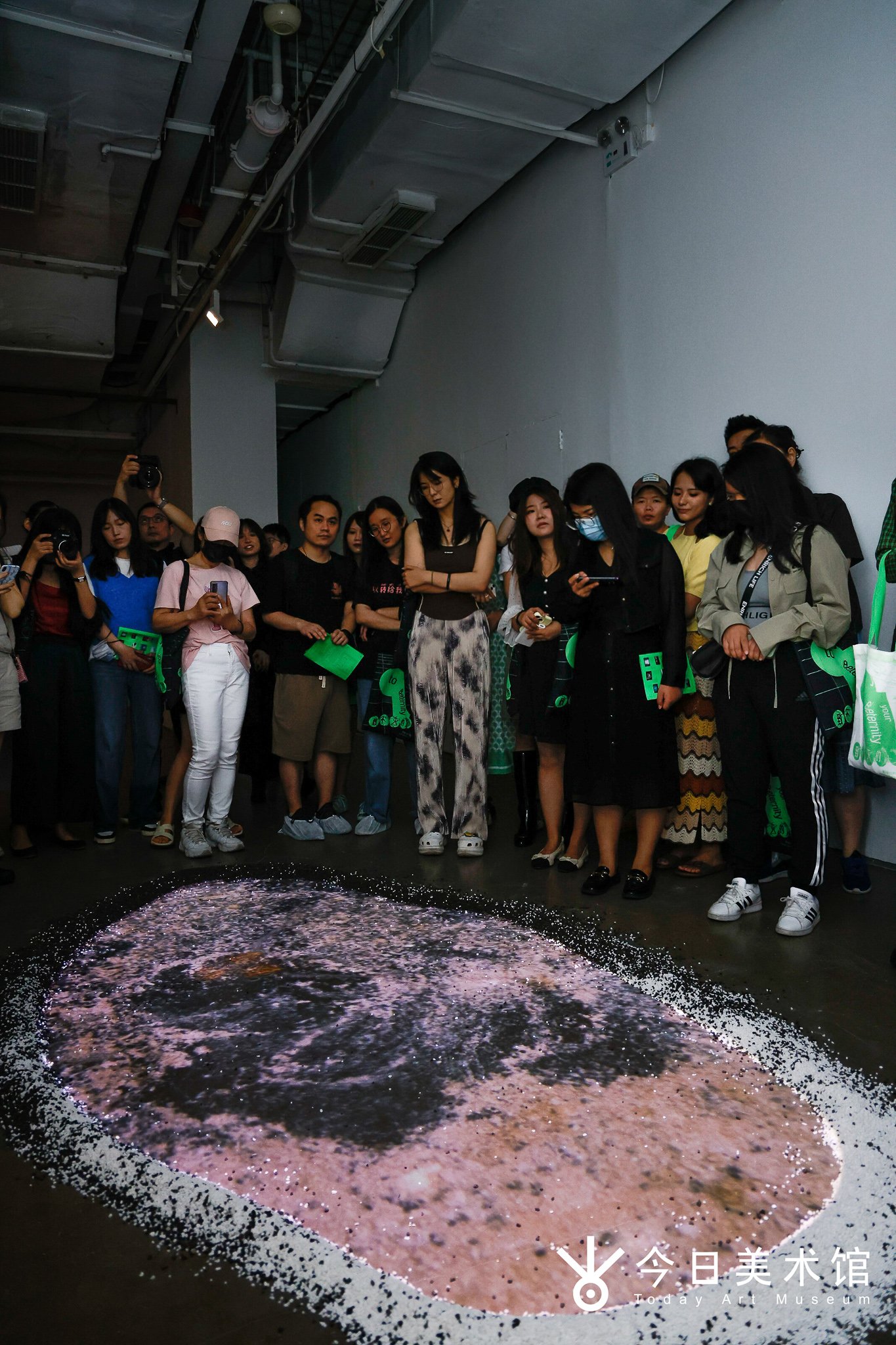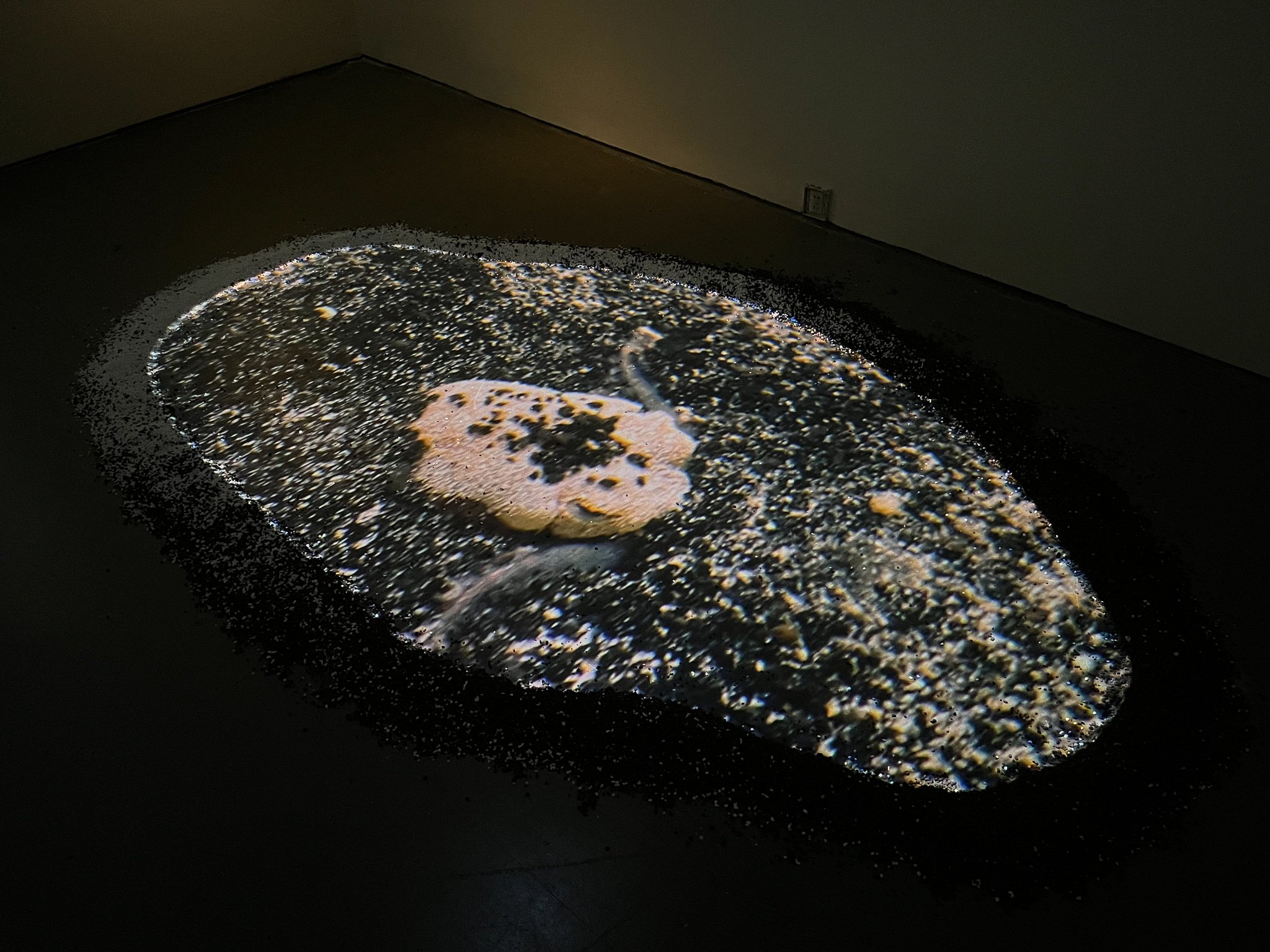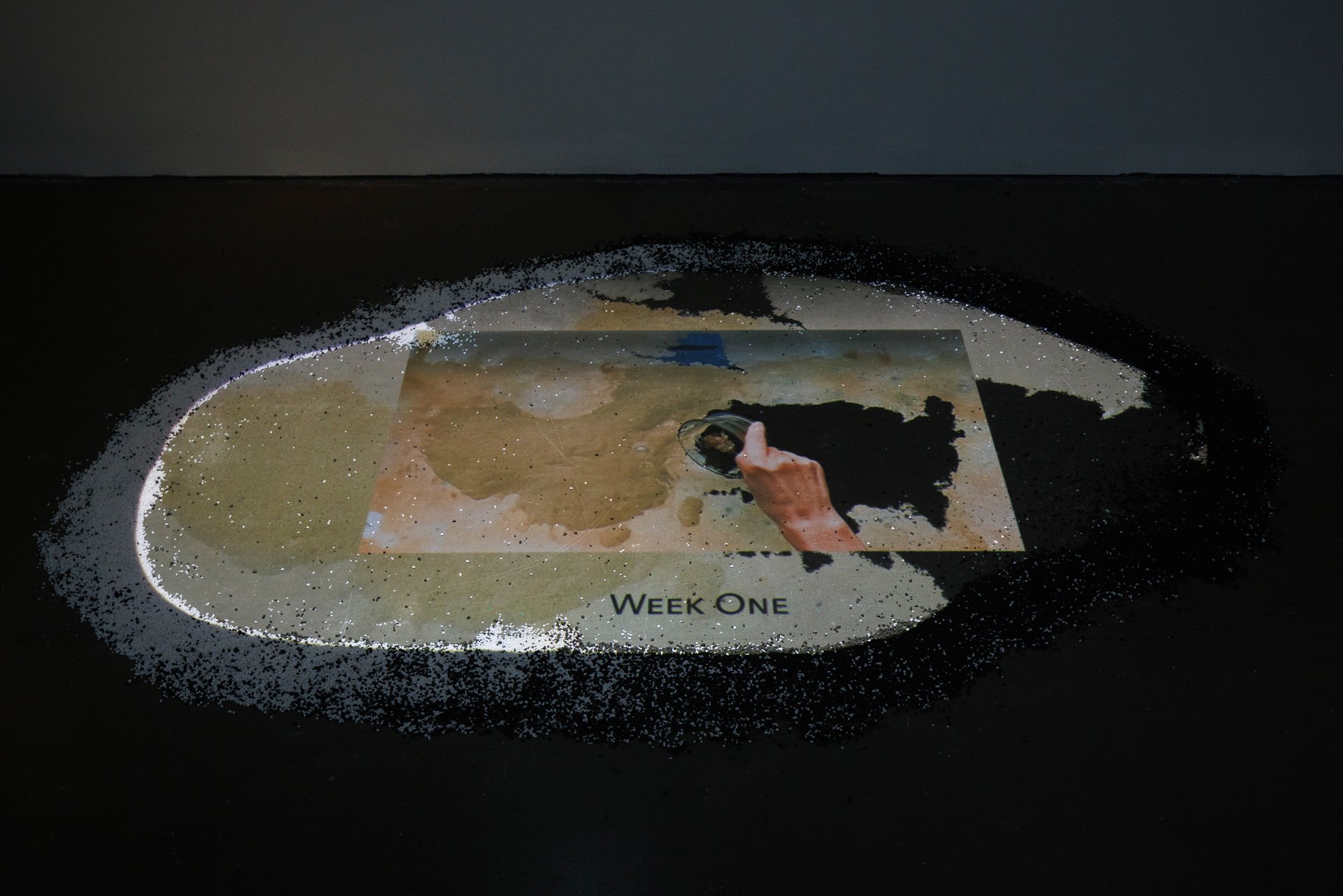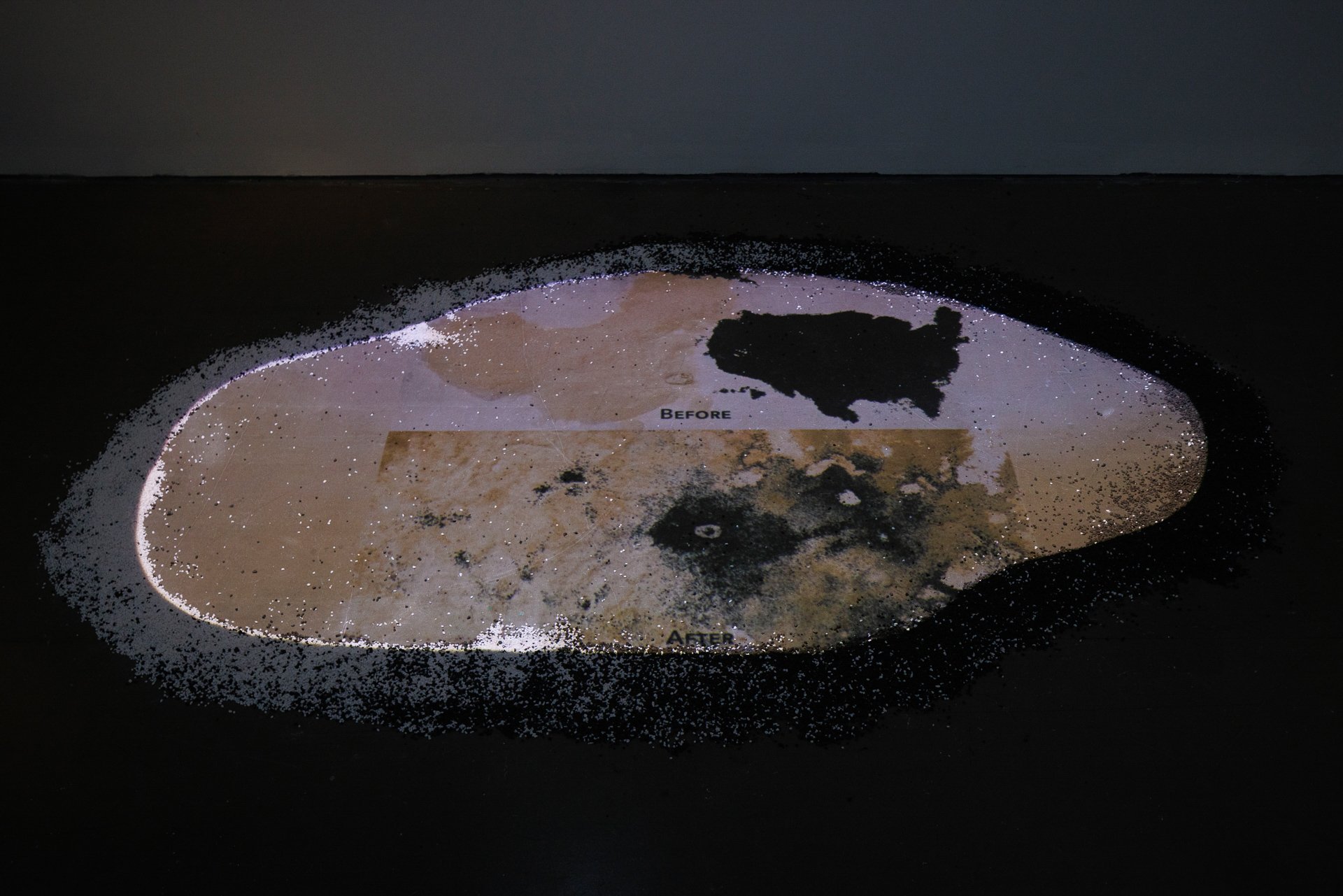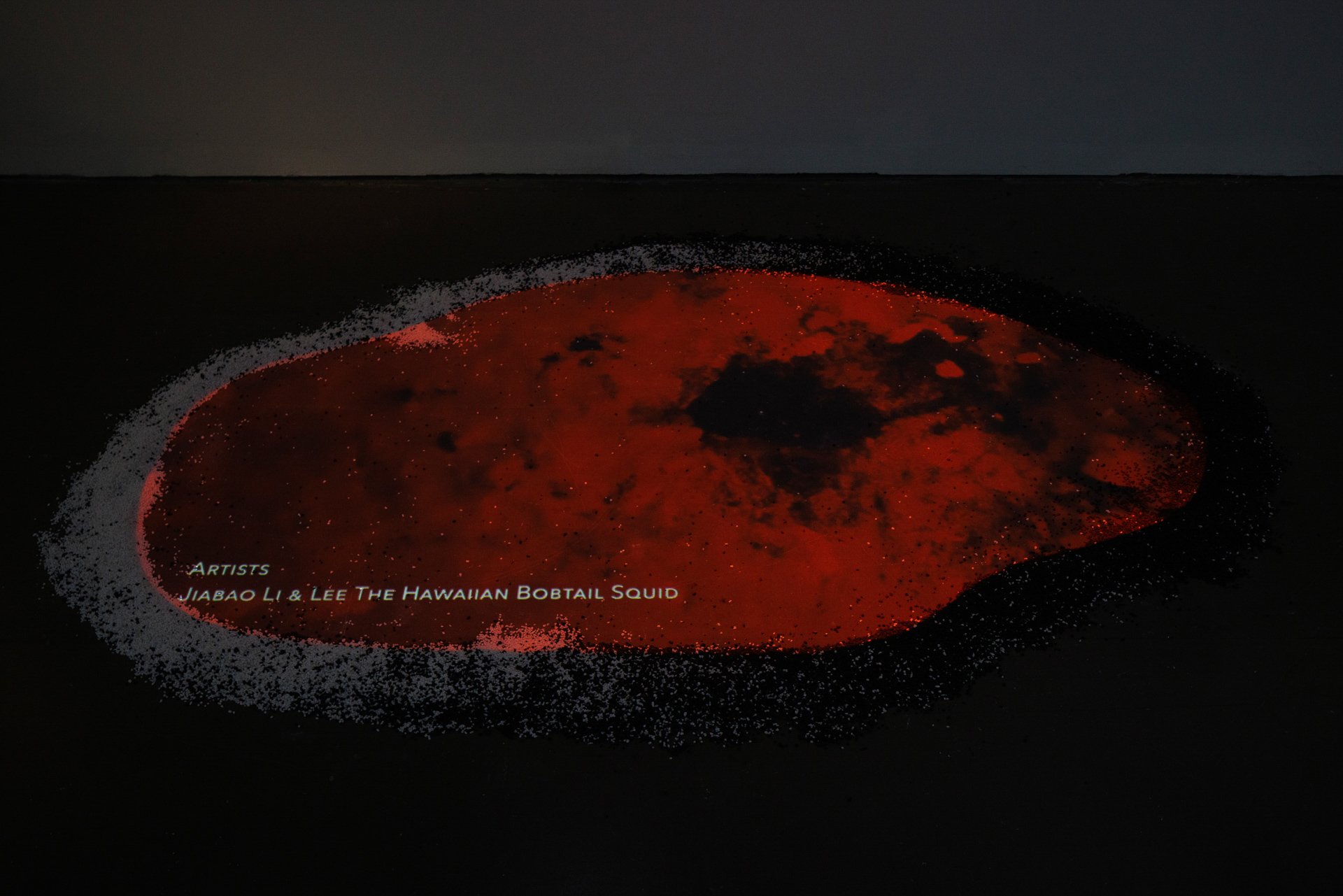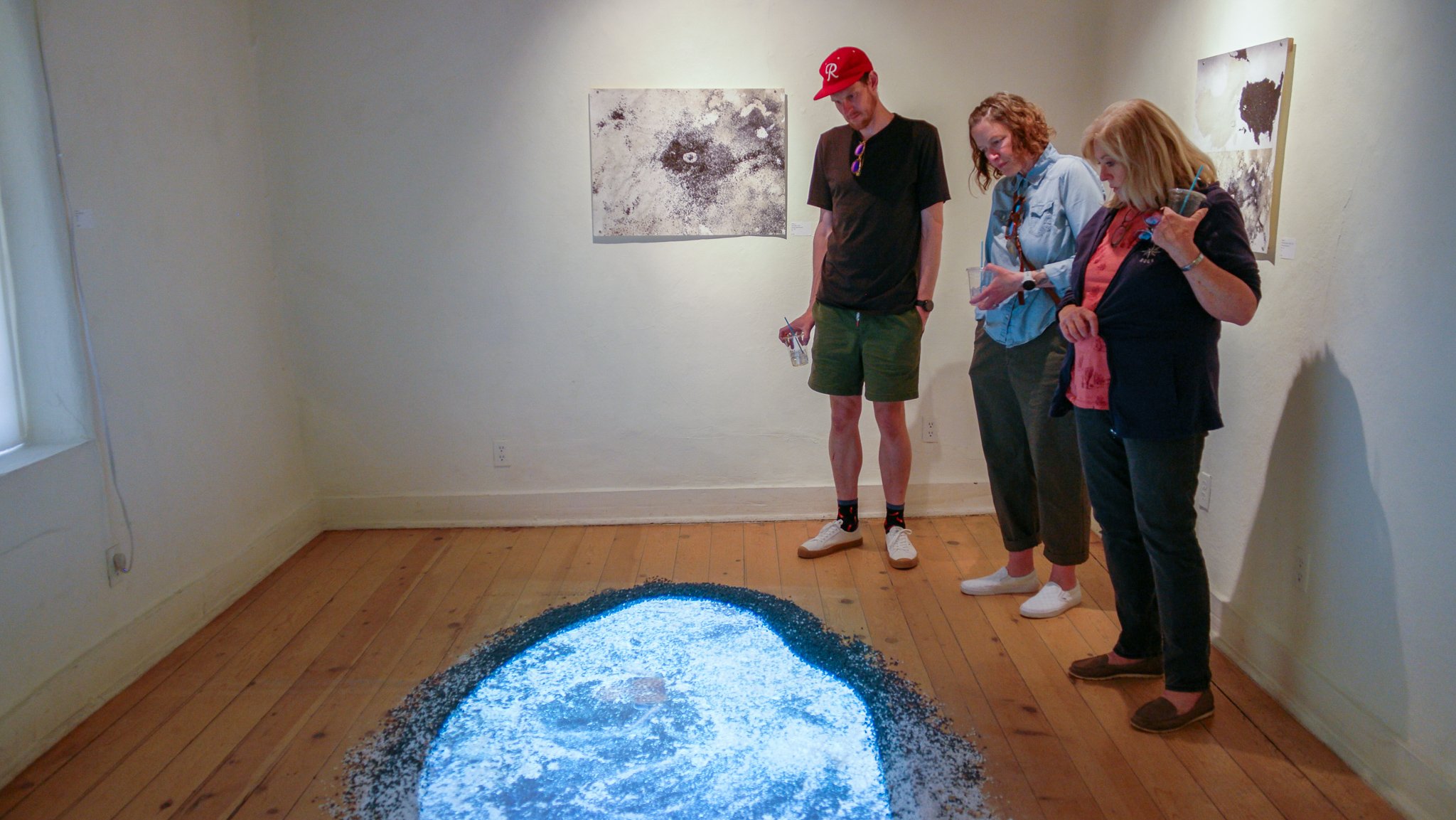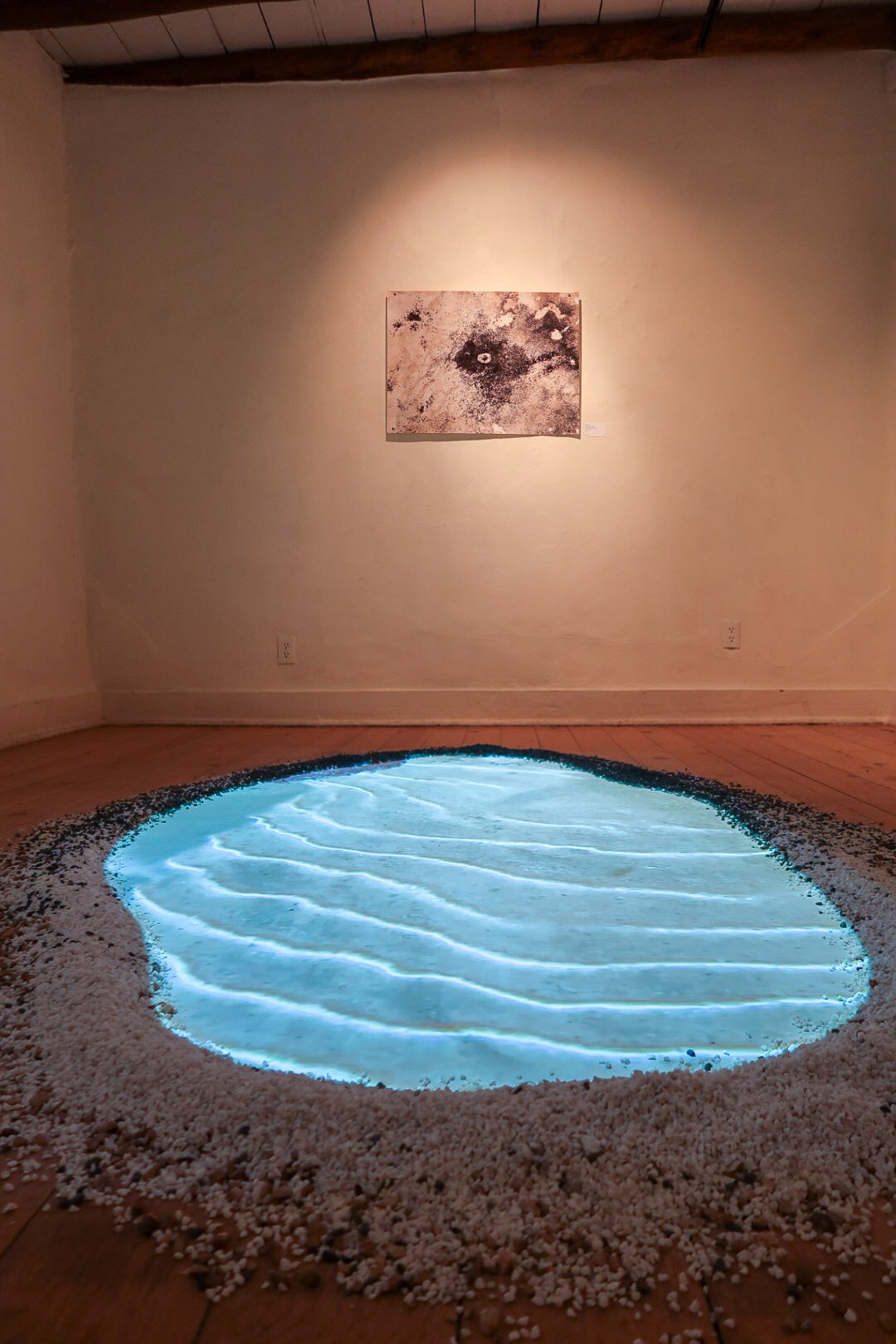Squid Map
I worked with Kewalo Marine Biology Lab in Hawaii. While the scientists were studying the squid, I noticed that the squids in the lab sit in the boring white tanks all day long. So I wonder if I could make their environment more interesting by building a playground for them. I collect the white sand and black sand from Hawaii islands and make them into certain countries' shapes. While the squid was living there. He carries the sand from one side to the other and spreads it around. He swims back and forth between the countries, across the borders without a Visa. He buries himself under the sand and uses his cute little tentacles to push the sand on his face as a camouflage.
Watching the squid reminds me of myself in many ways as an immigrant: moving between China and the US, carrying the baggage of two cultures, trying to assimilate to blend in, and found myself in this situation like the squid: he has white sand on his body but black sand on the top, sitting in the middle of black surrounded by white -- but feeling perfectly camouflaged.
We build borders between our countries that can block natural animal migrations. Animals that would not care about the delineation between countries are forced to recognize the difference and take a side.
After a month, the squid completely reinterprets our human-made maps and borders from the squid's perspective. The map humans have repetitively fought wars for, in the eyes of the squid, is drawn on their own terms.
Top: Map before the squid lived in. Bottom: Map after the squid lived in for a month
Artists: Jiabao Li & Lee The Hawaiian Bobtail Squid
Composer: Joel Laviolette
Editors: Jiabao Li, Dónal Foreman
Special Thanks: Margaret McFall-Ngai, Cooper Galvin, Edward Ruby, Randall Scarborough, Fiona Raby
The Glowing Squid Lab, Artist in Nature International Network
NEW INC, New Museum, Serpentine Gallery
No animals were harmed in the creation of this project.
MoMA Curator Paola Antonelli talks about “Squid Map”
Gyotaku made from squid ink on rice paper.
I created this during my residency at Kewalo Marine Lab at the University of Hawaii. While the scientists were experimenting on the Hawaiian Bobtail Squid, I witnessed the death of many squids — thousands of babies and some adults. The squid in this Gyotaku dead from a handling accident. While a researcher was moving her to a new tank, she panicked and jumped off from the balcony on the second floor and landed on the ground, leaving the ink behind in the tank. Like a funeral for her, I made this Gyotaku with her corpse and the ink she left behind — the sign of panic. Japanese fishermen have long used Gyotaku to show off how big their catches are. But here, instead of a celebration, it’s a funeral.
There are many other causes of death for the squids besides experiments. For example, a female squid died from over-mating. The male squid raped her and ripped apart her mantle.
What are the ethics of using animals in science versus art? Or versus eating them?
Image of squid babies I took under the microscope
